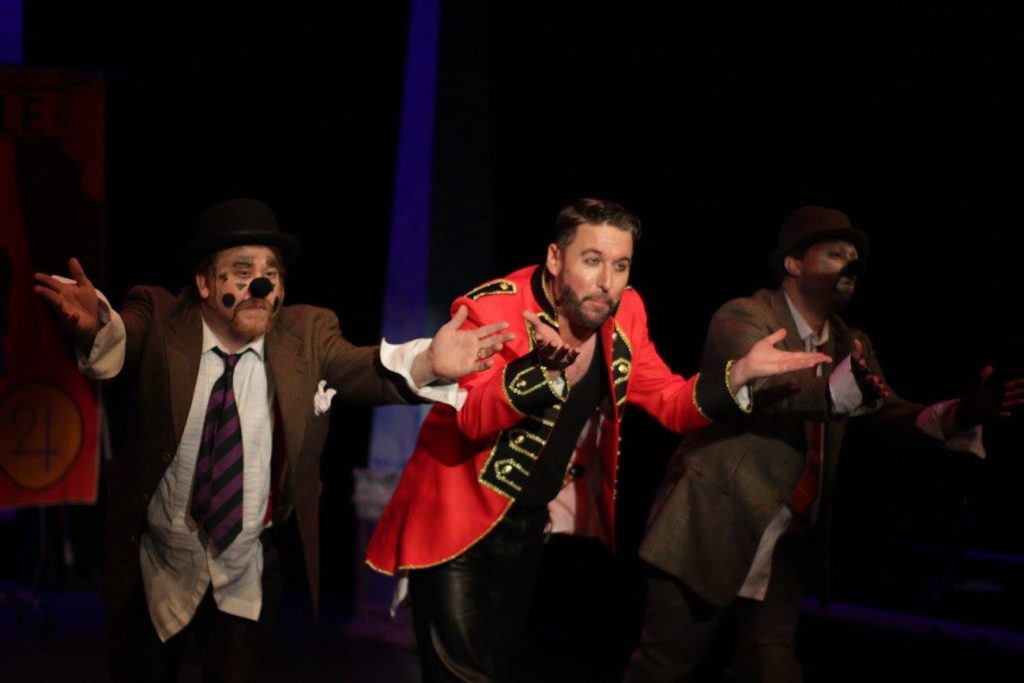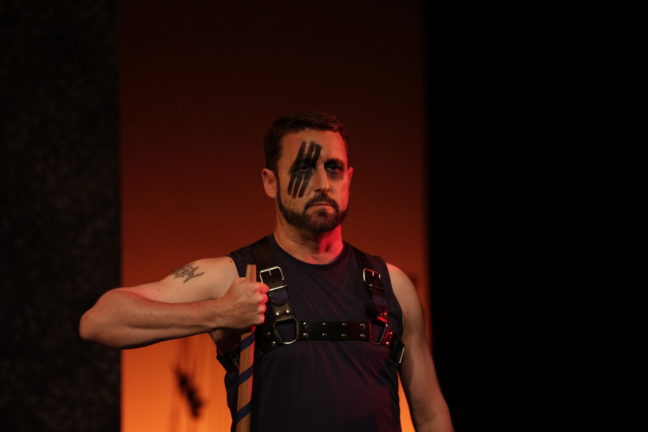Guest Blog Post by Daniel Christensen
[Editor’s Note: Today we are happy to feature a guest blog post by Daniel Christensen, an Eleusyve alumni who has been involved in every Rite we staged in one manner or another. For several weeks we’ve been talking about a post about the mechanics of invocation, and the various techniques employed in devotional work. We asked Daniel to kick off the topic because of his well rounded background with several methods of devotional work, many of which informed the practices of our cast over the years.]
I was honored to be involved with the Eleusyve Theater Group between 2004 and 2018, performing and/or working back stage for all seven of the rock opera Rites of Eleusis. Wrapped in and around that experience, I was also involved with a neo-pagan ritual theater group that performed a weekend-long immersive and interactive modern interpretation of the Eleusinian Mysteries.* I know that in some places, there are hard feelings between some neo-pagans and some Thelemites. I am not here to sing Kumbaya to make it all better**. What I will say is that each of those world-views and practices informed my approach to the other.
I would also point out the elephant in the temple: The big differences between these two forms of theater are rooted in the assumptions that we make about who our audience is and what they expect.
A few years ago, I saw two rituals rather close together, both on the descent of Inanna: one neo-pagan and one Thelemic. Both used the same myth and yet each presented the ritual in fundamentally different ways.
The neo-pagan ritual was rooted in physical participation: it was a community accustomed to spiral dances, improvised chants, and extemporaneous revelations from participants in touch with mythological archetypes. The attendees came to an old concrete military bunker after dark. They walked from station to station, shivering and shedding their bits of ego at each of the stages. A gate guardian demanded Inanna give up something to proceed; the attendees likewise gave up something of their own to proceed down to Erishkagal.
The Thelemic ritual was based in a culture that values individual observation and contemplation of a rite. Mass participation is limited to proscribed steps and signs, to pre – scripted recitation. Attendees to the Thelemic Descent ritual walked into a temple and sat against the side-walls, facing the center, as in a Gnostic Mass. The attendees watched Inanna make her progress down, just as they would watch the Priest progress from the tomb to the altar. They participated by reading excerpts from poetry, in unison; their sacrifice was written down and carried by one of the officers.
Both rituals had the same essential story. Both had priests and priestesses, music, lavish altars and costumes. Both had a profound impact on the people who attended. And yet, without even touching on the myth or the mystery, you know that both were very different in their presentation. Why? Because I believe a community will interact with your art in the manner to which they are accustomed. Both directors knew what their audiences would and would not do. We challenged a lot of that in both the Mysteries and the rock opera Rites. Sometimes it worked and sometimes it didn’t. (I’m still sad no one sat in the “splash zone” for the Rite of Jupiter. I mean, y’all wear enough black, it wouldn’t show.)

Still reading? Good.
Devotional practices work the same way. For the more secularly inclined, I’m talking about digging into a spiritual role by digging into yourself; getting your roots down into it and letting the archetype and the role grow into you. Devotion is action, attention is focus.
For the group that presented the modern Eleusinian Mysteries, this devotional practice was an essential part of the performance. Auditions were held in November and weekly rehearsals began in January (for a festival that happened in late March/early April.) But before the first rehearsal, each of the priests and priestesses began devotional work at home. Actors were encouraged to erect an altar for the god-form they portrayed, to decorate it with bits and pieces and symbols appropriate to the role, and to spend time (daily, if possible) working on and with that. Having an outward manifestation – an altar, a talisman – gives the subconscious mind some symbols to chew on.
To provide balance, the actors also dug in to some good old fashioned left-brain research. One year for the Eleusinian Mysteries, I had the role of Ares – Greek god of war. Of course, my gut reaction was to sign up for a martial arts class. But in my research, I learned that before Ares was a fighter, his mentor first taught him to dance. (You don’t think he caught Aphrodite’s attention by his spear work alone, do you?) In the end, my tango lessons taught me more about my body and my kinesthetic sense than the krav maga. (Bonus: It made for a great showdown at the end of the Rite of Venus between Libra/Jon and Saturn/me.
So if devotion is energy and attention is focus, the third ingredient is time. My best results always come from stuffing my brain full of facts and then letting them ferment until an idea falls out. That fermentation usually means walking away and letting my mind unwind on something else. Remember though: research and contemplation and action all have ways of stirring up changes in your brain, but ideas take time and rarely adhere to a schedule.
The results? Investing the energy and focus over time can lead to transformation. Back when I was involved, the festival celebrating the Eleusinian Mysteries included not only staged and scripted performances, they also included improvisational, interactive time between the attendees and the priests and priestesses. After months of work (plus a few crisis counseling classes), the actors could step into their roles and, if all went right, speak and act in ways they believe those gods would behave. They became the walking, talking altars with which the attendees contemplated and furthered their own spiritual growth and development.
All this was bouncing around in my brain before this random dude approached me at a party and said, “I’m making a rock opera version of Crowley’s Rite of Luna. Wanna play?” At the Rites, we had devotional altars to the gods backstage in our dressing rooms. On one memorable occasion, we allowed the audience to make devotional offerings to the godform, which led to someone offering a thong to Venus. As I said, a community will experience your art in the manner they are accustomed.
*For the purposes of this article: the “Rites of Eleusis” will refer to the ritual theater plays written by Aleister Crowley and concerning the lightning path of the planets on the Tree of Life from Saturn to Luna; “the Eleusinian Mysteries” will refer to both the ancient and modern ritual theater surrounding the story of Demeter and the abduction of Persephone.
** I will also add that I consider myself a dilettante (in Lon Milo DuQuette’s sense) in both traditions. I was initiated and have long since retired from the Wiccan organization; baptized and confirmed in the EGC. Any mistakes or misunderstandings I make about the Fundamental Nature of How These Groups Work are my own and should not reflect upon Eleusyve Productions, the Ordo Templi Orientis, the Ecclesia Gnostica Catholica, or the Aquarian Tabernacle Church.
[Second Editor’s Note: Daniel sells himself short in this post, as he was not merely involved, he was entirely integral. And a really good sport. As evident in the clip below, which is one of several promotional videos we shot featuring “Pastor Steve”.]
